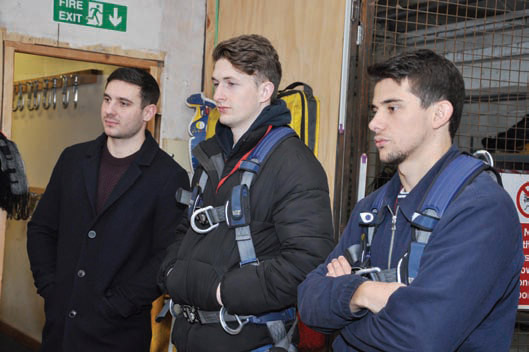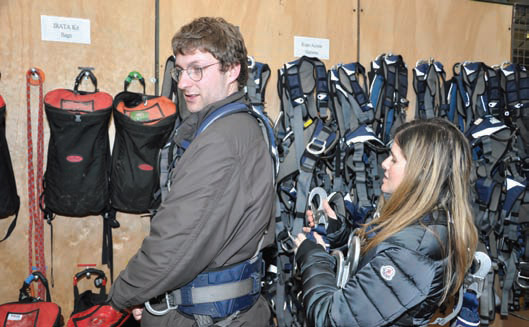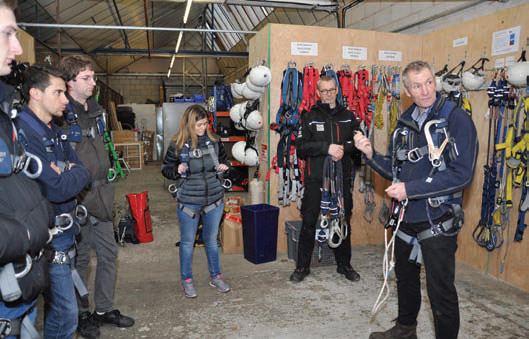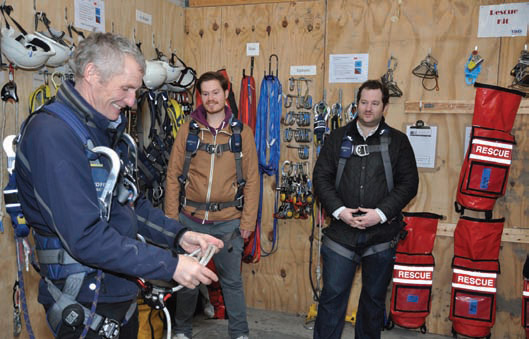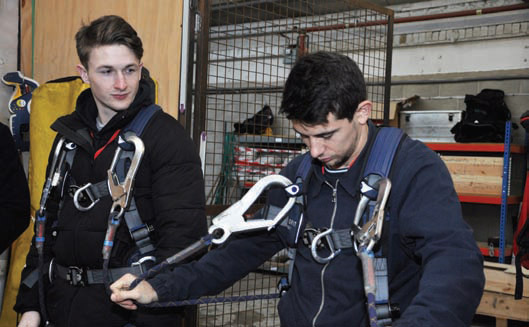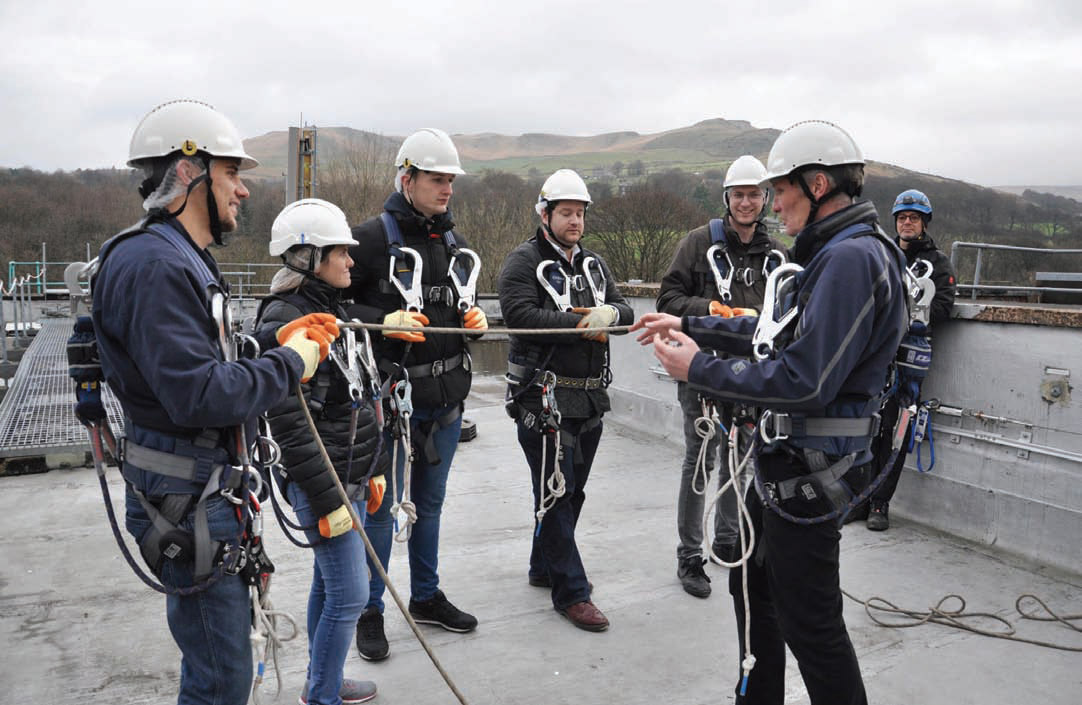Climber for a day
16 February 2017Science-based technology company 3M organised a fall-protection course on 14–15 December at its UK training headquarters in Greenfield. The event took place in the classroom and out on the structures, including a wind turbine and a monopole tower.
An action-packed fall protection event, held last year on 14–15 December at GM’s training headquarters at Greenfield (in Oldham, Greater Manchester), focused on safety while working at height, and included presentations, demonstrations and hands-on training. Working at height is one of the biggest causes of fatalities in the workplace, with recent HSE statistics showing that 26% of deaths at work are due to falls.
3M offers training courses and fall-protection solutions to ensure safety working at height and to reduce the number of accidents.
Mike Horrocks, sales manager for 3M’s fall-protection range, explains: “With the right equipment and sufficient training, there is no reason for working at height to be a dangerous job.
However, as we have seen with the recent HSE statistics, it is still the cause of many fatalities and serious injuries.
“At 3M, we want to see this number reduced and believe this can be done by using the expertise within the company to develop our current solutions to make them even more effective for users.
“We also see a great need for training, and have plans to build on our current offering, so we can show more people how to use their equipment safely.
It is not just about having the right protection; employees also have to be shown how to use the protection properly as, for the majority of the time, their safety will be in their own hands.”
Currently, 3M has two UK training facilities in Oldham and London, where workers are given hands-on working-at-height training, while the company’s PPE selection includes harnesses, lanyards and hooks.
3M works for several sectors such as construction, telecoms, oil and gas industry, wind energy, chemical and mining.
Stephen Morris, UK training sales manager, says: “We work with big companies to evaluate the safety plan and to offer the best safety-training solutions in compliance with Work at Height Regulations 2005.
“Some of our customers are Konecranes, Siemens, Network rail, Jaguar, Sky and NDC.” In the open-air area, Morris showed the drop test from the fully equipped demo van. The test indicated the forces workers are subjected to during a fall.
The training activities included rooftop working with work-restraint systems; fall arrest and work positioning at the monopole tower; and escape and rescue at the wind turbine.
Among the anchor points, Morris showed the DB Sala Ez-line, a temporary horizontal lifeline system. “This system has been designed to eliminate large and bulky coils of cable that are difficult to set up, relocate and store,” says Morris.
The EZ-Line system has a built-in winch for fast and easy set-up, use and dismantling, and can be used for shipping, construction, and oil and gas applications.
On the monopole tower, all the attendees had the chance to wear and test the Sala Exofit harness, launched by the company for professional workers in several sectors such as rigging, oil and gas and renewable energy. The features include dorsal connection for the main fall-arrest point on the back, in addition to providing adjusting points, leg straps, pelvic support, padding, suspension-relief straps and impact indicators.
“The Sala Exofit harness offers a number of unique features that add comfort and convenience for the frequent harness user,” explains Morris.
At the end of the two-day event, eyes and arms were directed towards the 30m wind turbine, positioned in the 3M yard. For climbing on to one of the oldest turbines in the UK, the Cabloc vertical fall-arrest system was adopted. This system consists of an 8mm cable that is terminated at the top by a cable ferrule and cable clamps at the bottom.
Instead of coming down by the internal tower ladder, attendees descended from the wind turbine attached to the Rollgliss R550, which controls the rate of the descent via a unique, twin-braking system. It also can be used to lift casualties in rescue situations.
This fully automatic, controlled descent device has a 0.6–0.9m (2.0–3.0ft/sec) descent speed.
Ideal for rescue and evacuation from heights of up to 500.0m for one user weighing 140.0kg or two users totalling 280.0kg.
The bidirectional design allows one end of the lifeline to descend while the other ascends, ready for another rescue.
The company’s future plans include greater focus and increased investment in engineered systems. 3M will be adding resources within its technical support service and investing in ground-breaking and innovative technologies to improve safety standards.
